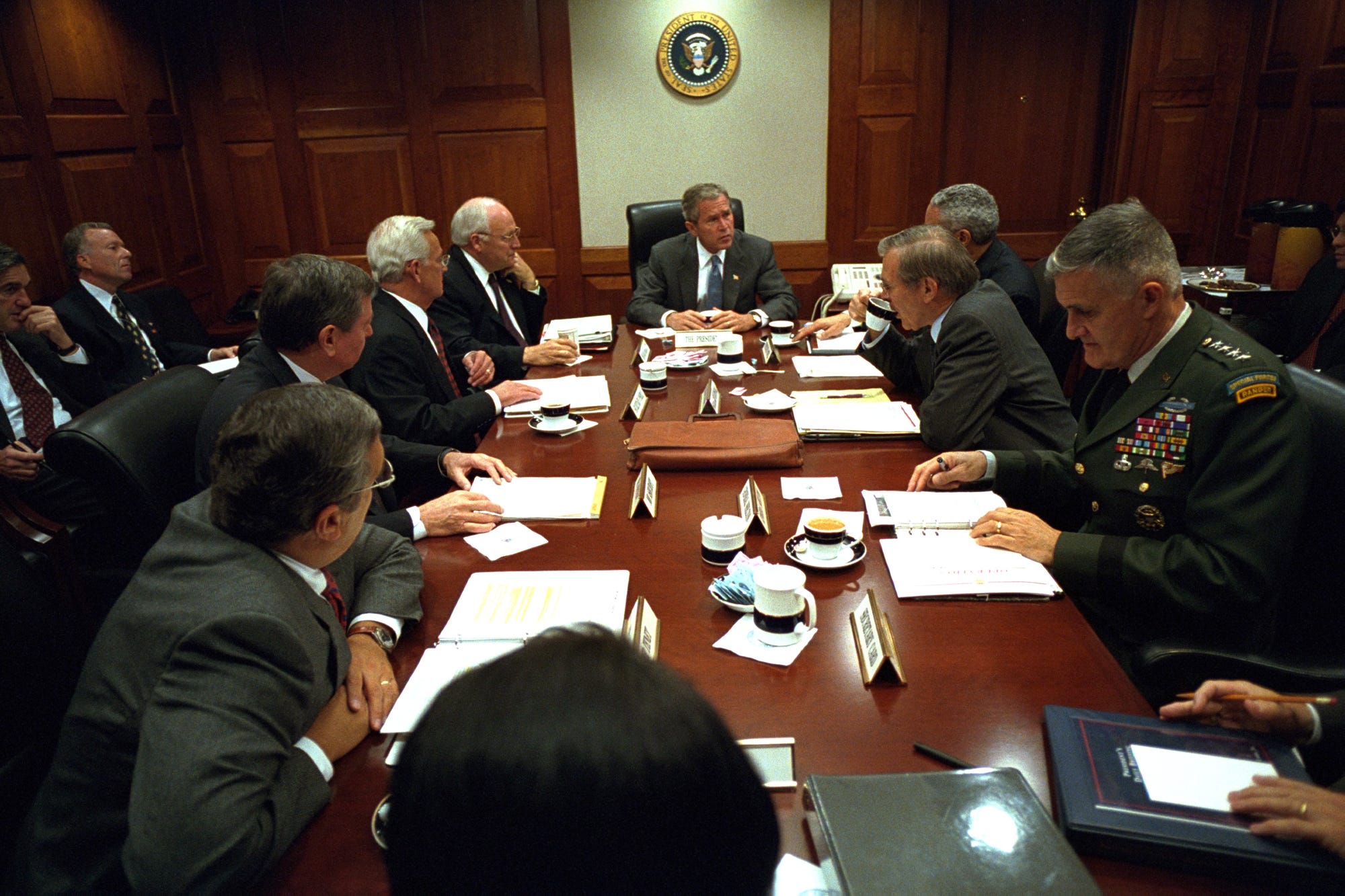The Situation Room, Revisited
Never-before-seen photos offer a glimpse of a historic day inside the White House.
“Holy shit, we’re going after bin Laden,” White House photographer Pete Souza thought to himself. It was May 1, 2011, and the operation to kill Osama bin Laden was underway.
At 4:05 p.m. Souza photographed President Obama and his cabinet huddled in a cramped room to watch a live video feed of the raid in Abbottabad, Pakistan. The iconic image captured a definitive moment of the Obama presidency, and is among the most important photographs in political history.
“I was there for the entirety of the raid, which was around 40 minutes,” Souza recalled to Politico. “I shot about a hundred photos.”
Unfortunately, only a handful of photos from that historic moment inside the anteroom were part of the thousands recently obtained by The Washington Post through a Freedom of Information Act request.
The Obama Presidential Library gave The Post a 161-page PDF with thumbnails of 2,570 photos taken between May 1 and May 3, 2011. However, the images are in no discernible order and the filenames are not in the standard format of an official White House photo. According to The Post, 307 photos were withheld because they contained “national security classified information.”
Here are six photos from inside the anteroom.
The President interacting with Air Force General Brad Webb and congratulating his cabinet are previously unseen, important moments. But I’d love to see the other 96 photos Souza made in that cramped room.
While there were no grand revelations in the huge cache of newly released images, it’s a fascinating opportunity to see how Souza worked each moment. I pulled frames from the PDF and created contact sheets for a closer look (reminder that these are not in order).
The White House initially released this photo of Obama, listening intently during a meeting in the situation room.
Here is a wider selection from that scene. Souza, working with a 135/2.0, shot a subtle variety of photos of the President looking intense and decisive — some with a splash of color popping into the frame, some without.
This scene from the Oval Office of Obama drafting his speech to the nation is remarkable in its restraint. If you look closely, you can Souza’s reflection in the window.
More photos from that situation show how Souza varied his composition, moving closer, stepping back, including all or a portion of the Resolute desk with the President on and off the phone.
Souza made this photo of the President reading over his speech with Press Secretary Jay Carney and Vice President Biden just as the news broke confirming bin Laden’s death.
The contact sheets reveal another notable moment — Obama watching the breaking news alone. Bin Laden isn’t on the screen but still, it’s quite a photo.
After Obama’s speech, Souza photographed the President shaking hands with Admiral Mike Mullen in the Green Room.
The contact sheets reveal that seconds later Obama then shook Clinton’s hand, grasping her arm and leaning in for what appears to be a kiss on the cheek.
The Post’s exclusive reminded me of another FOIA request for a monumental moment in history — photos of President George W. Bush on 9/11. In 2016, Frontline obtained over 1,000 never-before-seen images by White House photographer Eric Draper, who documented the President’s every move that day. The contact sheets are a masterclass in photojournalism.
This photo by Draper captures President Bush making calls while monitoring the attacks in a classroom during a visit Emma E. Booker Elementary School in Sarasota, Florida. The details are captivating and disquieting.
You can see the layers unfold and align in the contact sheet. The tension is palpable, as is the confusion.
Draper’s photographs of President Bush on Air Force One are also riveting. He was with the President in his office when the Towers fell. “The room was really silent,” Draper told Politico in 2016. “Andy Card, Ari, and Dan Bartlett were there. There’s an image of the president, with his hands on his hips, just watching.”
“I was documenting a nightmare,” Draper told NBC News in 2016. “I used the camera to actually shield my tears.”
On September 20, Draper photographed President Bush meeting with the National Security Council in the Situation Room.
The Situation Room hasn’t changed a great deal since then. Though there’s much less wood paneling and the name plates are gone.
White House photographer Shealah Craighead made this photo of Trump and his cabinet on October 26, 2019, monitoring a raid on ISIS leader Abu Bakr al-Baghdadi’s compound in Syria. It’s a rigid frame, complicated by a chaotic, somewhat symbolic, foreground of computers and cables. Trump’s glare is menacing.
On February 2, 2022, White House photographer Adam Schultz made this image of a masked-up President Biden and team watching the Special Forces operation against ISIS leader Abu Ibrahim al-Hashemi al-Quraishi in the Situation Room. The Biden administration’s cable management is impressive. The flags are a nice addition as well.
In researching this piece I happened upon this image by Kennedy administration photographer Robert Knudsen of the very first Situation Room.
Instead of name plates and computers and cables and flags, there’s an ashtray.



















